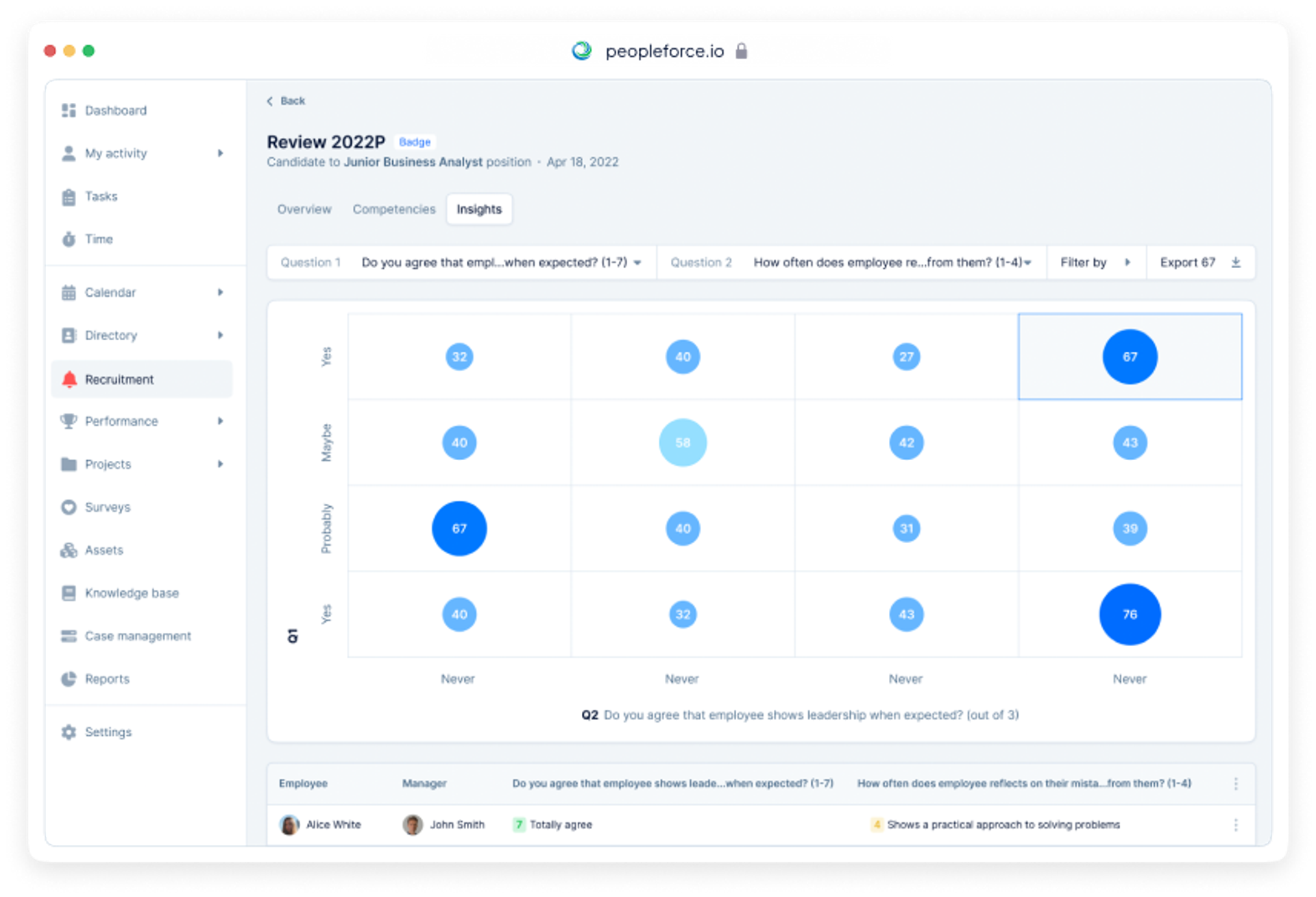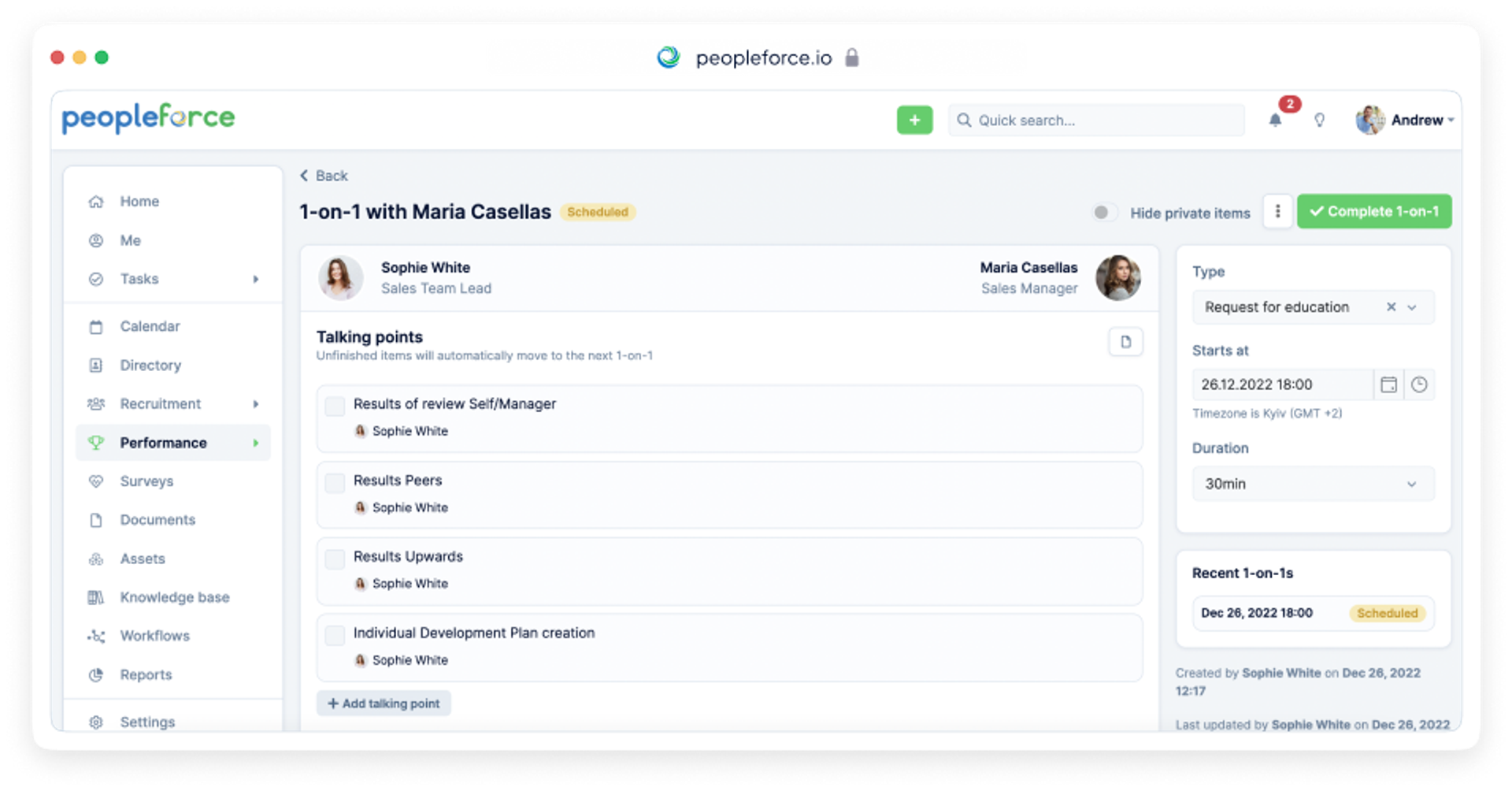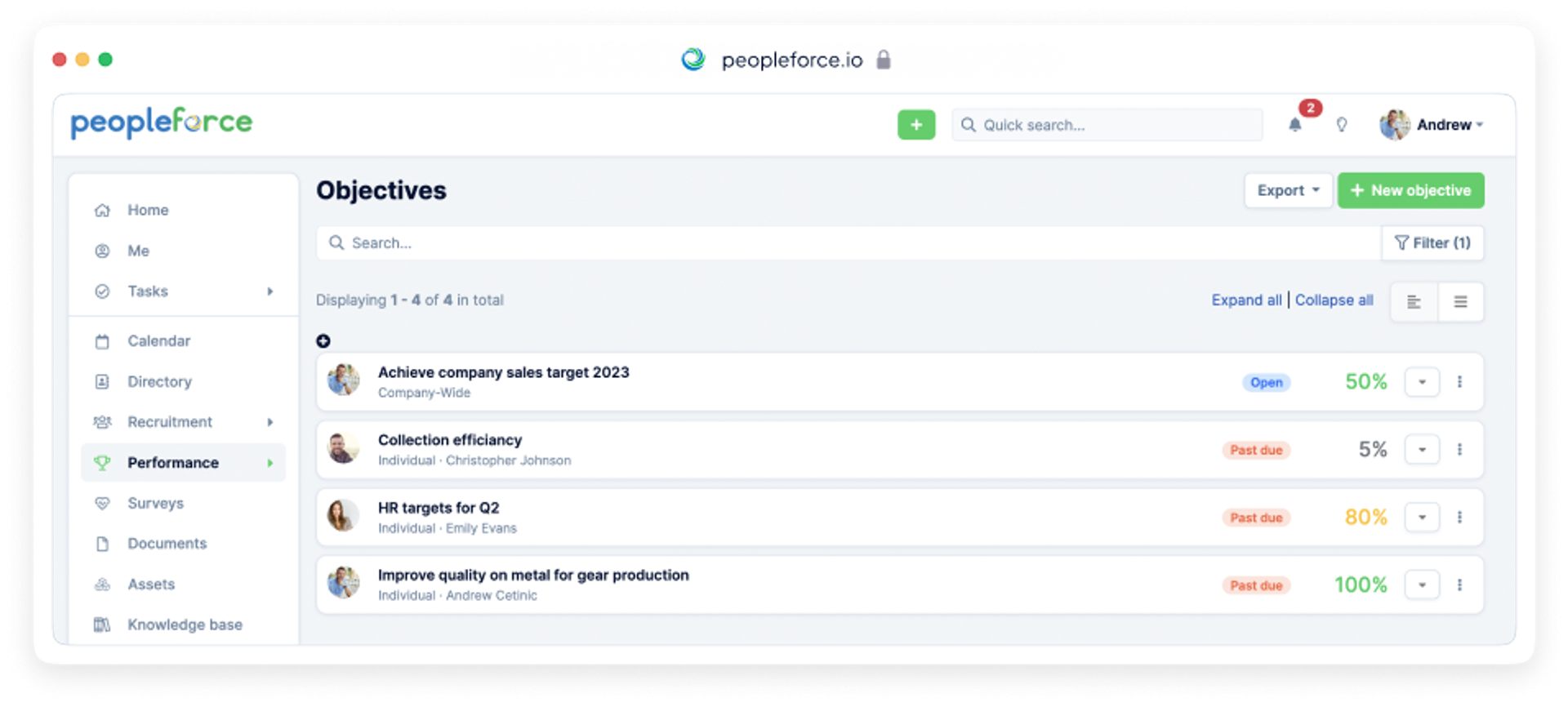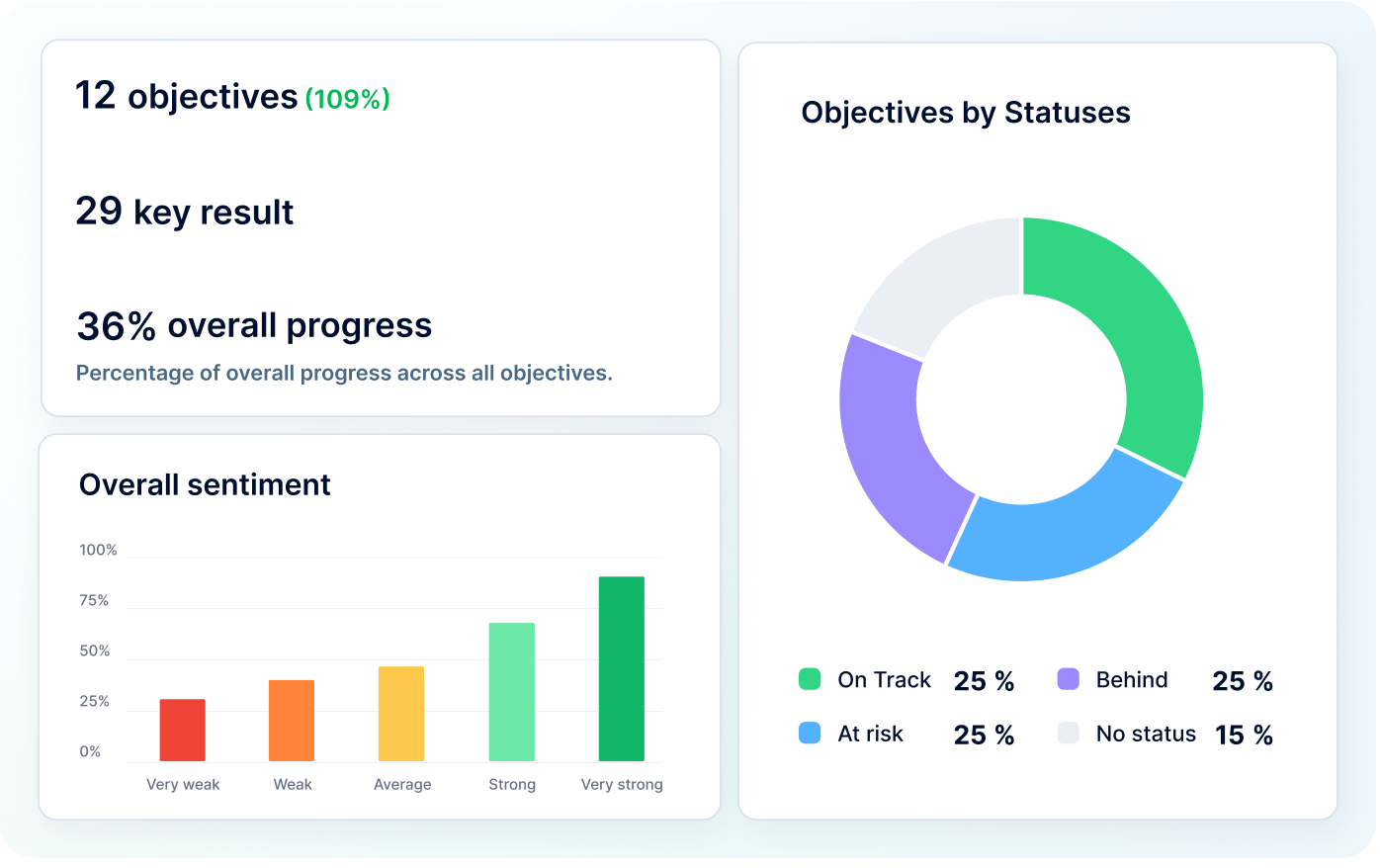
How HRM tools help address underperformance
Employees can be a company's greatest asset in achieving its corporate goals. That being said, achievements depend entirely on how the team handles its primary responsibilities. As such, it's the employees who demonstrate poor performance that should be the main focus of HR professionals.
But what’s to be done if the company as a whole is experiencing a decline in performance across the board, but there isn’t enough time for micromanagement?
There is a solution to this problem. You need to apply tools that optimize the daily work of your specialists to alleviate their routine issues and ensure that you are doing everything possible to safeguard the effectiveness of your team.
What is underperformance?
Underperformance in the workplace occurs when the quality and speed of an employee's work decreases below the required level. The characteristics and severity of these situations may vary, but underperformance is often characterized by the following indicators:
- Failure to perform in accordance with expected competencies
- Disruptive, negative or unacceptable behavior
- Deterioration in compliance with company or department rules, procedures and policies
- Inconsistency in the work or communication performed with the company's corporate culture and values
Productive employees are necessary for any organization to sustain its growth, however employees who don't perform their duties can have an undesirable impact in several ways:
- Efficiency is reduced: An employee who fails to do his or her job will not achieve the results his or her position requires. Work may be done late or incompletely, forcing other team members to plug in to complete the task
- Quality of work is lost: Employees who perform their tasks at a low level will not produce quality results, which will result in customers, partners and everyone involved in the company becoming unsatisfied.
- Team morale drops: One person's poor performance can cause resentment and frustration, undermining overall team morale.
Every employer inevitably faces periods of fluctuating performance, but it should be taken seriously if poor performance turns into a trend. Managers need to be able to identify workers who are struggling and address the root causes of the blockers.
What leads to employee underperformance?
There are many reasons why employees do not perform their duties properly:
- Lack of necessary skills: The employee has been assigned to a role for which he or she has insufficient training, and in which he or she does not feel confident. Also, they may have technical ability, but do not know how to manage their time properly.
- Job dissatisfaction: The job does not meet the employee's expectations, so they feel frustrated and lack incentive to put in effort.
- Mismatch of corporate culture: Sometimes people do not feel connected to a particular company or team culture.
- Stressful work environment: An atmosphere of team pressure or personal conflicts with co-workers can cause job-related stress that affects performance.
- Inadequate learning and lack of development opportunities: Without opportunities to learn new skills, some workers may not be able to improve their performance. They may also feel less motivated if they do not see ways to develop and advance their careers.
- Poor onboarding: Proper onboarding promotes employee adaptation and engagement. If it does not, the employee is unprepared for his or her responsibilities, and suffers a drop in morale.
- Personal issues: Difficult circumstances in employees' personal lives can affect their ability to focus on their task. Sometimes, the company involved may not interested in supporting the team during a difficult time, resulting in less employee interest in the work environment and decreased morale.
- External factors: There may be difficult external issues that can stop an employee doing their job. In Ukraine for example, such factors are military threats, air alerts, blackouts, the need to relocate, etc.
- Mental health problems: The need for support and even consultations of a psychologist are real problems and challenges of our time, which should be taken seriously.
- Lack of a well-thought-out workplace in the home office: If a company supports remote work, but does not take care that the employee has everything necessary at home, it should expet problems with communication, time management of the specialist, etc.
How do you improve employee productivity using HRM tools?
Methods used to fix a team's underperformance can vary from case to case, however, universal methods include the use of tools to automate or optimize a work routine. They help the team to:
- Offload work schedules and automate processes.
- Adjust weekend and leave policies if employees need time off due to burnout, stress, or personal reasons.
- Organize onboarding policies to better train employees
- Assess candidate and employee competencies with screening tests early in the hiring process
- Establish a clear organizational structure, knowledge base, and peer contacts, which will creates a comfortable environment for communication
- Create an understandable corporate culture where high performance is cultivated and all aspects of effective work are elaborated on including values, policies, rules, opportunities for development, setting and achieving team/personal goals etc.
Let's look at examples of specific HRM-systems functions that can help correct poor performance.
1. Situation and workload analysis
As soon as you notice that an employee is not doing a job well, you need to act. Change in behaviour could represent the daily marks on the mood tracker, a feature that prompts employees to choose the emoticon that corresponds to their mood today. If you see that a particular employee has begun to signal a decline in mood, see if it's an indicator of burnout and find out if all is well.
As soon as you notice that an employee is not doing his or her job well, you need to act. To identify performance issues, start by analyzing the employee's performance over a particular period and assess the employee's performance and compliance with their stated competencies.
You can do this with Performance Review assessment tools. This is a method whereby the manager and the employee (and involving additional stakeholders if necessary) share data-driven employee assessments. These are based on the use of specific competencies and will highlight in detail where the employee can improve.

Also available to the manager is the n-box matrix, a tool that helps compare the manifestation of various competencies in any given workplace. This is necessary to understand how the employee deals with different situations, and the result usually allows you to compare the assessment of the employee with other members of the team, and see whether the employee is productive or not, and analyze the reasons for this performance.
2. 1-on-1 meetings
If you discover an unproductive employee, do not jump to conclusions. Each case should be dealt with separately; after all, it is possible that the reasons are objective, and not related to the office.
First of all, you need to hear feedback from the employee so use 1-on-1 meetings whose tools allow you to discuss not only the reasons and manifestations of unproductivity, but also to develop a plan of further action.
A well-designed HRM system also allows you to assign a person responsible for the action plan steps, so you can distinguish the tasks that need to be prepared by you or the subordinate whose activity is under consideration.

3. Feedback generations
If you notice that you need feedback not just from one employee, but from the team as a whole, you can use surveys to understand in greater detail why underperformance is a problem.
You can use the following questions for surveys:
- How much are you struggling with your current workload?
- In what ways can the team improve to make their workload acceptable?
- Do you see how much your work is affecting the team's outcomes?
- Are you satisfied with your communication with your manager?
- What extraneous factors positively or negatively affect your performance?
- Are you positive about achieving future goals with the company?
- Do you see yourself with the company in the future?
- How can the company change your work life/routine for the better?
- What are the main blockers you notice in your work?
4. Employee planning
Use the OKR tool to set goals for the employee that they can realistically achieve within a certain period of time. It’s important to ensure these goals are reasonable as unfulfilled goals can lead to lower morale.

OKRs also allow you to work through an employee's development plan, activity and performance over a certain period of time. This will help ensure that they can achieve their stated goals.
How do you choose HR tools for your team?
It’s understandable that even if a company understands the need for work optimization, and even has some ideas on hand as to what exactly it needs for its employees, it may take time before management wants to take a serious interest.
The HR professional's job at this point is to demonstrate ready-made solutions that can quickly help improve the employee's workplace experience and increase their interest in completing tasks.
Are you interested in using HRM tools to identify the causes of staff unproductivity? Seek help from our experts who can help you identify features in the PeopleForce system to solve your problem. Book a demo presentation, where an expert will demonstrate all the benefits of our system so that you can pump up your team and increase its level of efficiency.
Get started with PeopleForce today
Automate your HR routine to create a high performance culture in your company. PeopleForce is your best HRM alternative to stay business driven but people focused.

Recent articles
🎉 PeopleForce Wrapped 2025: a year of HR magic
2025 wasn’t just about shipping features — it was about making HR work better at scale. Let’s unwrap everything we built together.
OKRs vs. KPIs: Choosing the right framework
Unsure when to use OKRs or KPIs? Learn how to choose the right framework to maximize your team’s success.
Why OKRs feel like hell (and how to make them simple)
Why OKRs feel like chaos: missed goals, messy reviews, and burnout. Learn how to simplify goal-setting and reclaim clarity quickly.

